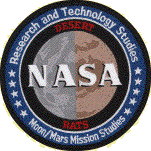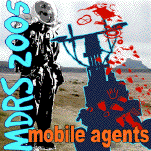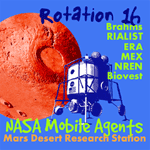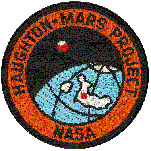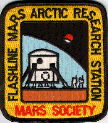NASA-SETI Haughton-Mars Project
&
Mars Society Research Stations
Analog field studies provide a way of experimentally learning how we will live and work in space--on the moon, Mars, and beyond. An engineer might call this work"empirical requirements analysis."

Inside Flashline Mars Arctic Research Station, "the hab," July 16, 2001.
Vladimir Pletser (ESA, Belgium), Robert Zubrin, and I are discussing what we learned from a recent "EVA" (excursion in simulated space suits).
The NASA's Haughton-Mars Project (HMP) has investigated the Haughton Crater on Devon Island in the Canadian Arctic as an analog of Mars. Geologists, biologists, computer scientists, physicians, and journalists have participated in a series of field seasons, led by Pascal Lee, an astrogeologist at SETI and the NASA/Ames Research Center.
The Mars Society has constructed habitats at Haughton (Flashline Mars Arctic Research Station (FMARS)) and near Hanksville, UT (Mars Desert Research Station), which will enable studying how scientists and engineers will live and work on Mars. I have proposed a framework for managing scientific research in these habitats and systematically studied a two week rotation at MDRS.
My field reports describe my research during HMP and in the research stations.
My favorite photos, associated publications, and some slide presentations are available below.
Learn about the Mars Society's Research Stations:
- Video: Zubrin's FMARS2001 Dedication Speech
- My report on the second FMARS simulation with Robert Zubrin as commander: Simulating "Mars on Earth" (July 2001)
- How I managed and studied the fifth MDRS simulation: Mars Society 2002: "A Closed Mars Analog Simulation"
- How we used MDRS to test and refine a wireless computing and communications system that partially automates the role of Apollo's CapCom: The Mobile Agents Project.

July 2001 at the Flashline Mars Arctic Research Station
